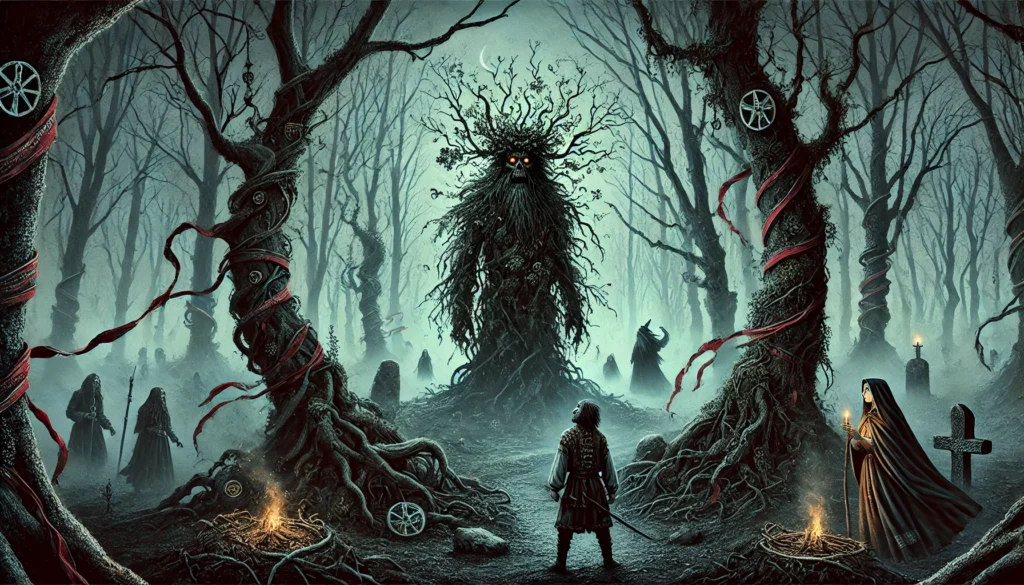In the heart of the ancient Slavic lands, shrouded in dense forests and cloaked in mist, villagers lived in quiet respect of forces they could neither see nor understand. The pagans of the region were deeply connected to the land, honoring deities of nature and ancestors in rites passed down over generations. Among these traditions was the enigmatic practice of curseology—the belief that curses were as tangible as rain and could shape fate as powerfully as any god’s will.
In a small village nestled between a dark forest and a winding river, the story of Malina, a young girl of curious spirit, spread like wildfire. Malina was known for her gifts: she could tell the future in the ripples of water, speak to animals in their own language, and see flickers of spirits hidden in the shadows. The villagers revered her, yet fear shadowed their awe, for Malina was said to be touched by Baba Yaga, the wild and fearsome witch of Slavic lore.
One autumn evening, a hunter named Igor, prideful and skeptical of the old ways, ignored Malina’s warning not to venture into the forest that night. She’d seen an omen—dark crows cawing at his door and shadows stretching longer than they should. Yet Igor, laughing off the curse as “children’s tales,” marched into the woods, determined to return with proof of her folly.
Night fell, and the air grew thick as Igor stalked deeper into the woods. Soon, he found himself lost, surrounded by trees twisted like gnarled fingers, reaching out in eerie silence. He tried retracing his steps but found his path blocked by thick mist and unseen forces. Hours passed, and in his desperation, Igor called out for Malina, pleading for her help. It was then that he saw her, a figure standing by the trees, cloaked in shadow. But this was not Malina—it was something far older and darker.
The being, a spirit known as Leshy, appeared as half-man, half-tree, with roots twisting up his legs and eyes glowing like embers. Leshy was known to protect the forest from those who disrespected its spirits. In a deep, rumbling voice, Leshy condemned Igor for his arrogance, saying, “You scorn the old ways and dare tread on sacred land without respect. You, Igor, will know the curse of forgetting.”
And so, the curse took hold. Igor’s memories faded, his life slipping away like leaves in the wind. The villagers found him days later, wandering the outskirts of the forest, his eyes vacant, unable to remember who he was or the life he had left behind. The curse had bound his soul to the forest; he became one of the many spirits, doomed to wander aimlessly, forever forgetting his name.
From that day on, the village never took Malina’s warnings lightly. They honored the spirits of the forest with offerings, tying ribbons to trees and whispering blessings. The story of Igor’s curse became legend, a reminder that in the Slavic world, curses were not just words—they were living forces, woven into the very fabric of life and death. The villagers knew well: to anger a spirit was to tempt fate, for the curse was a tool of justice wielded by forces far beyond human understanding. And so, curseology remained a deeply respected part of Slavic folklore, a reminder that the old ways held truths worth fearing, and sometimes, worth revering.
